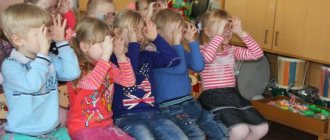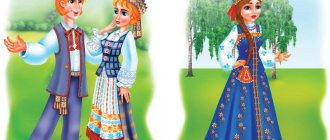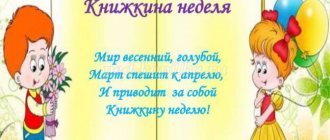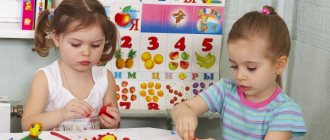reference Information
Documents • Laws • Notices • Document approvals • Contracts • Requests for proposals • Technical specifications • Development plans • Document management • Analytics • Events • Competitions • Results • City administrations • Orders • Contracts • Work execution • Protocols for consideration of applications • Auctions • Projects • Protocols • Budgetary organizations Municipalities • Districts • Education • Programs Reports
: • by references • Documentary base • Securities
Regulations
: • Financial documents
Resolutions
: • Categories by topic • Finance • cities of the Russian Federation • regions • by exact dates Regulations
Terms
: • Scientific terminology • Financial • Economic
Time
: • Dates • 2015 • 2016 Documents in the financial sector • in the investment sector • Financial documents - programs
Short-term project for older children with presentation
Project “White-trunked Beauty” (senior group, short-term)
Author: Olesya Petrovna Chistyakova, teacher at the Moscow State Preschool Educational Institution, general development kindergarten “Cornflower” Motive: Love for nature is a feeling that includes emotional responsiveness, a sustainable interest in nature and the desire to protect and increase natural resources. But children often see adults violating basic standards of behavior in recreational areas, leaving trash, playing loud music, carving inscriptions on tree trunks, and hurting homeless animals. Observing the children, we noticed that they care about animals, are interested in the plant world, look at books about nature, about plants, share their impressions, ask about trees and flowers. Model of 3 questions: What do we know about this?
What do we want to know? How will we know? Birch is a tree.
Birch trees decorate the street. You can hide from the heat. The birch is beautiful. Birds love to sit on a birch tree. In summer it is cool under the birch tree, there is a breeze. The birch is beautiful. You can hide from the sun. Moves the leaves. Thin branches, white trunk. What does it eat? Where does he get water? Why does everyone love birch? Why are trees needed? What benefits do trees provide? Why is it cool under a birch tree? Why do birds love birch trees? What can be made from birch? Can a birch tree speak? Does birch heal? Let's ask the teacher. I'll ask my grandmother. Let's read it in the book. We find out from the encyclopedia. The teacher will tell you. Let's read it in the book. Let's read it in the book. I'll ask dad. I'll ask the teacher. Let's read it in the encyclopedia. Conclusions: 1. Children show great interest in nature. Children have a superficial knowledge of the benefits of trees, their relationships with living and inanimate nature. 2. Children do not know why birch is the most revered tree in Russia. Types of work: Collection of information. Selection of illustrative material. Selection of fiction and journalistic material. Selection of musical material. Organized and unorganized activities. Joint and independent activities. Project presentation. Type of project: social - cognitive Project participants: children older - preparatory group 6 - 7 years old, teachers Chistyakova O.P., music director, parents. Duration: short-term (2 weeks). Stage 1 - Project development. The goal of the project: to form the beginning of environmental culture in children of senior preschool age. Objectives: 1. Expand children's ideas about the most revered tree in Russia - the birch, about its significance in human life: health, aesthetic, economic. 2. To form in children ideas about the relationship between birch and the environment. 3. Introduce poems, songs, riddles about birch. 4. Develop cognitive activity in children. 5. Activate and enrich your vocabulary. 6. Cultivate a love for Russian nature and a caring attitude towards it. Expected result: A formed idea in children: about the birch as a revered tree in Russia, about the colors, images, and melodies in which the birch is embodied; about the relationship of birch with living and inanimate nature; about the benefits of trees and birch in particular. Long-term planning. Observation series: Why are there no leaves on the trees in winter? Birch in a snow-white headdress. Frosty sunny day. Blizzard. Conversations with children:
The beauty of nature is priceless.
The relationship of a tree with living and inanimate nature. (see in Appendices) What do we know about trees and birch in particular. (see in Appendices) How birch was used in ancient times. (see in the Appendices) Excursion around the territory of the kindergarten (to the park). Fiction. Reading:
V. Bianchi “The Magic Birch”, I. Sokolov-Mikitov “Birch”, E. Timoshenko “Fir-trees”.
A retelling of the Russian folk tale “How a Goat Built a Hut.” Memorization:
A. Prokofiev “I love the Russian birch tree”, S. Yesenin “White birch tree”.
Organized activities Conversation “The beauty of nature is priceless.” Goal: to let children understand that no amount of money can buy a beautiful tree. It needs to be planted and a lot of effort must be made so that it does not die, but takes root and grows. Foster love and respect for nature. Conversation “The relationship of wood with living and inanimate nature.” Goal: to deepen the understanding of the relationships between living and inanimate nature and the factors that influence the life of birch. (see in the Appendices) Teacher’s story “The Sung Tree.” Goal: to introduce children to how ordinary Russian people have long shown interest in the Russian birch tree, wrote poems, songs about it, danced in circles, Fr. Cultivate a love for Russian birch and a caring attitude towards it. Conversation “What benefits do trees bring? How was birch used in ancient times? Goal: to bring children to an understanding that trees are of great importance in human life. Introduce how birch was used in ancient times. Complex lesson “I love Russian birch”. Goal: to continue to develop children’s interest in their native nature, to generalize knowledge about birch. Expand children's understanding of the image of the birch in poetry, music, and works of fine art. Cultivate a love for Russian birch. (see in the Appendices) Joint and independent activity Artistically productive: Drawing “White Birch” based on the poem by S. Yesenin. Application “Autumn Birch”. Joint activity with parents: Sunday observations “Beauty Birch”. Children's fiction. Photo album “Native Nature”. Reproductions of paintings by I. Levitan (“Spring. Big Water”, “Golden Autumn”), K. Yuon (“March Sun”), I. Grabar (“February Blue”), I. Shishkin (“Wilderness”). Album with drawings “Portraits of a tree at different times of the year.” Stage 2 - Project implementation. Stage 3 – Presentation. Entertainment for children “I love the Russian birch tree.” Result of the work: Questions for children:
- What new things have you learned that you didn’t know before?
-What surprised you? — What did you like most? Perspective: design of the observation diary “Our Tree”. Appendix Conversation “What do we know about trees and birch in particular?” Program content. Find out what children know about trees in general and birch in particular. Deepen interest in birch, lead to the idea that birch wants to be friends with people. 1. How are trees different from other plants? 2. What trees do you know? 3. Are trees alive? Why do you think so? 4. Are there many trees growing near the kindergarten? What are their names? 5. Are there many trees growing near your house? What are their names? 6. Who plants trees? For what? 7. What is the name of a forest in which only birches grow? 8. Where are trees better - in the forest or in the city? 9. How can you determine the age of a birch? 10. Have trees ever helped you? What about you? Give examples. 11. Let's imagine that the trees have disappeared. What will happen on Earth? Why might trees disappear? Teacher's story “How was birch used in ancient times?” Our ancestors used birch beams to illuminate their houses. The sick were treated with birch sap. The wheels of the cart were lubricated with tar, which was made from birch. Wooden toys, wooden sculptures, spoons were made from birch; tueskas (they carried water and kvass), baskets for berries and mushrooms were made from birch bark. They wrote on birch bark. Nowadays, birch is used in construction, furniture, plywood, skis are made from it, yellow and green paint is made from birch leaves, and medicines are made from the buds. Conversation “The relationship of wood with living and inanimate nature” Program content. Deepen your understanding of the relationships between living and inanimate nature and the factors that influence the life of birch. - Can a tree live without light? (Light, like an artist, colors the leaves green.) - Does the birch grow in an open or shaded place? - Can a tree live without heat? (The beginning of the appearance of leaves on trees depends on the amount of heat.) - What happens to trees in winter? (In winter, trees do not grow - they go into sleep. And the trees are protected from the cold by cork fabric, which does not allow either water or air to pass out.) - What else can’t trees live without? (Without water, they drink water like people. The tree receives water from rain, from melt water, drinks it from the ground - the soil.) - Trees, like us, must breathe. They breathe through small holes on the leaves, so small that they are invisible.) - Trees need clean air: they die from dirty air. At the same time, the trees themselves purify the air, making it suitable for humans and other living beings. —Does a tree need birds? (Birds eat various insects that can harm the tree.) - The wind carries birch seeds. — Earthworms participate in the formation of soil, “pass” lumps of earth and dry leaves through themselves, loosen the soil, making it suitable for the development of plants. - Why do trees get sick? (This means that harmful insects have settled on the bark. This can be seen if you look at the reverse side of the bark - the passages made by pests.) - How can you determine the age of a birch tree? (On the bark: the older the tree, the harder and thicker the bark, so old trees can withstand frosts more easily. Summary of a complex lesson in the senior group “I love Russian birch” Program content: continue to develop children’s interest in their native nature; generalize knowledge about birch; expand ideas children about the image of the birch in poetry, music, works of fine art; to cultivate a love for the Russian birch. Material for the lesson: Illustration with the image of a birch. A tape recorder with an audio recording of the song “There was a birch tree in the field” (Russian folk song), “Seasons” by P. I. Tchaikovsky. Reproductions of paintings by I. Levitan "Spring. Big Water", "Golden Autumn", K. Juno "March Sun". I. Grabar "February Azure", I. Shishkin "Wilderness". Lesson progress Riddle :
Worth Alenka, green scarf, Slim waist, white sundress. (Birch) The teacher suggests looking at an illustration of a birch. - How can we recognize a birch at any time of the year? (Only a birch has a white trunk.) - What do people call a birch? (Russian, white-trunked, curly, elegant, golden, beloved.) - What kind of leaves does a birch tree have? (Green, emerald, sticky, golden.) - Of all the trees in the Russian forest, our birch is the cutest. The light birch groves are nice and clean. White trunks are covered with thin birch bark. There is a special day in Russian nature when young leaves begin to bloom on birch trees. You will enter the forest and gasp with joy: the forest edges are covered with a gentle green haze. What a beauty! What bliss! — With whom in Rus' was the beautiful birch compared? (With a girl who has a thin, flexible waist, with a bride.) - In June, the holiday of the “Russian Birch” was celebrated in Rus'. In the morning, a bright, colorful crowd headed towards the birch grove. The girls chose one of the birch trees and decorated it, tied colored rags and ribbons to the branches, hung gingerbread cookies and sweets. Round dances were performed around, people danced, and games were played. — Many poems and songs have been written about the white-trunked beauty. Listening to the Russian folk song “There was a birch tree in the field.” - Now let's read poems about birch. Reading poems: A. Prokofiev “I love the Russian birch tree”, S. Yesenin “White birch tree”. — Many talented landscape artists captured the birch tree in their paintings. It is beautiful in its own way at different times of the year! I invite children to look at reproductions of paintings and talk about them. — In artists’ paintings, birch trees are straight, slender, and white-trunked. - Our beautiful birch tree can predict the weather. Listen to the signs: If a lot of sap flows from a birch tree in spring, it means a rainy summer. If in the fall the birch leaves begin to turn yellow from the top, spring will be early. The birch will open its leaves in front of the alder - the summer will be dry, the alder in front of the birch will be wet. The collective application “Birch” is performed to Russian folk melodies.
Presentation on the topic: White-trunked beauty
We recommend watching:
Project in kindergarten for older preschoolers 5-7 years old on legal topics Project in the senior group of kindergarten Project in the senior group on the topic “Trees and shrubs in spring” Project in the senior and preparatory group of the kindergarten
Similar articles:
Project for children of the senior group “Our cheerful garden”
Education and science
Science
: Tests • Scientific and technological progress • Pedagogy • Work programs • Faculties • Methodological recommendations • School • Vocational education • Student motivation
Subjects
: Biology • Geography • Geology • History • Literature • Literary genres • Literary characters • Mathematics • Medicine • Music • Law • Housing Law • Land Law • Criminal Law • Codes • Psychology (Logic) • Russian Language • Sociology • Physics • Philology • Philosophy • Chemistry • Jurisprudence
Business and finance
Business
: • Banks • Wealth and prosperity • Corruption • (Crime) • Marketing • Management • Investments • Securities: • Management • Open Joint Stock Companies • Projects • Documents • Securities - control • Securities - valuations • Bonds • Debts • Currency • Real estate • (Rent) • Professions • Work • Trade • Services • Finance • Insurance • Budget • Financial services • Loans • Companies • State enterprises • Economics • Macroeconomics • Microeconomics • Taxes • Audit Industry
:
• Metallurgy • Oil • Agriculture • Energy
Construction
• Architecture • Interior • Floors and ceilings • Construction process • Building materials • Thermal insulation • Exterior • Organization and production management
Photo blogs
Art
• Children's creativity • Paintings • Art • Congratulations • Film review • Musical world • Russian rock
World
• People of the world • The world around us • My homeland is the USSR • Nature Channel • Stones and minerals • Cooking, food • Construction and architecture • Under construction • Transport • Weapons • Military transport
beauty
• Fashion Pandia.ru • Girls and Girls
School
• Tests for the Unified State Exam • Solver books • Unified State Examination • 10th and 11th grades • Various textbooks • 4th grade • Russian language grades 5-9 • 5th grade • 6th grade • 7th grade • 8th grade
Wisdom
• Cliparts • Quotes
Author Directory (private accounts)
AutoAuto service • Auto parts • Products for auto • Auto repair centers • Auto accessories • auto parts for foreign cars • Body repair • Auto repair and maintenance • Car chassis repair • Auto chemicals • oils • technical centers • Gasoline engine repair • auto electrical repair • Automatic transmission repair • Tire fitting BusinessAutomation of business processes • Online stores • Construction • Telephone communications • Wholesale companies LeisureLeisure • Entertainment • Creativity • Catering • Restaurants • Bars • Cafes • Coffee shops • Night clubs • Literature TechnologiesAutomation of production processes • Internet • Internet providers • Communications • Information technologies • IT companies • WEB studios • Website promotion • Software sales • Switching equipment • IP telephony | InfrastructureCity • Authority • District administrations • Courts • Utilities • Teen clubs • Public organizations • City information sites The sciencePedagogy • Education • Schools • Training • Teachers GoodsTrading companies • Trade and service companies • Mobile phones • Accessories for mobile phones • Navigation equipment |
Short-term project at a preschool educational institution for the senior group “We advise everyone to be friends”
Relevance: in older preschool age, mature children establish themselves, establish themselves in a team of children, form friendships and the ability to cooperate, and increase attention to peers as a partner for joint activities and communication.
Problem: during long-term observations of the behavior and independent activities of children, life in a group during the educational process, and routine moments, we noted that many children do not know how to communicate with peers, negotiate, solve problem situations peacefully, or defend their point of view without quarrels, insults and fights. Children put their own priorities above, without regard for the opinions and needs of other children.
Project scale: short-term (2 months).
Goal: introducing children to established norms of social behavior and rules of relationships with peers, creating ideas about friendship.
Tasks:
1. Generalize, expand and deepen children’s knowledge about friendship and friends.
2. Encourage children to engage in collective activities, promote the emergence and accumulation of positive communication experiences and cultivate social and communication skills (responsiveness, kindness, empathy, compassion, empathy, friendliness, ability to negotiate with each other).
3. Systematize children’s information about the culture of behavior in society and relationships between people.
I. Preparatory stage:
1. Reading “Festival of Friendship” by I. Vachkov, discussion, conversation and questions about the content.
II. Implementation stage:
1. Conversation about friendship and friends “Who is a friend?”, “What is friendship?”
2. Reading: Victor Dragunsky “Childhood Friend.” Discussion and conversation on content.
3. Proverbs and sayings about friendship and friends.
4. Reading the fairy tale “The Bubble, the Straw and the Bast Shot.”
5. Reading “Three Comrades” by V. Oseeva.
6. Reading poems about friendship: Y. Entin “About Friendship”, A. Kuznetsova “Girlfriends”, T. Agibalova “I Now Have a Friend”, V. Berezhnaya “Friendship is a Warm Wind...”, L. Kvitko “Two friend”, V. Viktorov “Children of the whole Earth are friends.”
7. Compiling the story “My Best Friend.”
8. Conversation - reasoning “Why do we need friends?”
9. Dramatization of the fairy tale “The Cat, the Rooster and the Fox.”
10. Games and exercises “Recognize by voice”, “With your backs to each other”, “Give advice”, “Compliment”.
11. Watching the cartoon “The Biggest Friend”, discussions and conversation on the content.
12. Productive activity: drawing “Portrait of a Friend”, applique “Gift for a Friend”, designing a “Toy for a Friend” from paper.
13. Listening and memorizing songs about friendship “A True Faithful Friend”, memorizing the poem “We advise everyone to be friends.”
14. Resolution of the problem situation “Who offended whom?”
The final stage:
1. Drawing up rules of friendship.
2. Leisure “We advise everyone to be friends.”
Final event: quiz “About friendship and friends.”
Expected result: children classify information about friendship and friends, norms of behavior and rules of relationships with peers, the atmosphere in the group will improve.
Nomination: Kindergarten, Methodological developments, Project activities, Senior group Author: Belyaevskikh Elena Vyacheslavovna Position: teacher Place of work: MADO "Child Development Center - Kindergarten No. 410" Location: Perm, st. Captain's 21
Date modified: February 17, 2022 Date published: February 17, 2018



